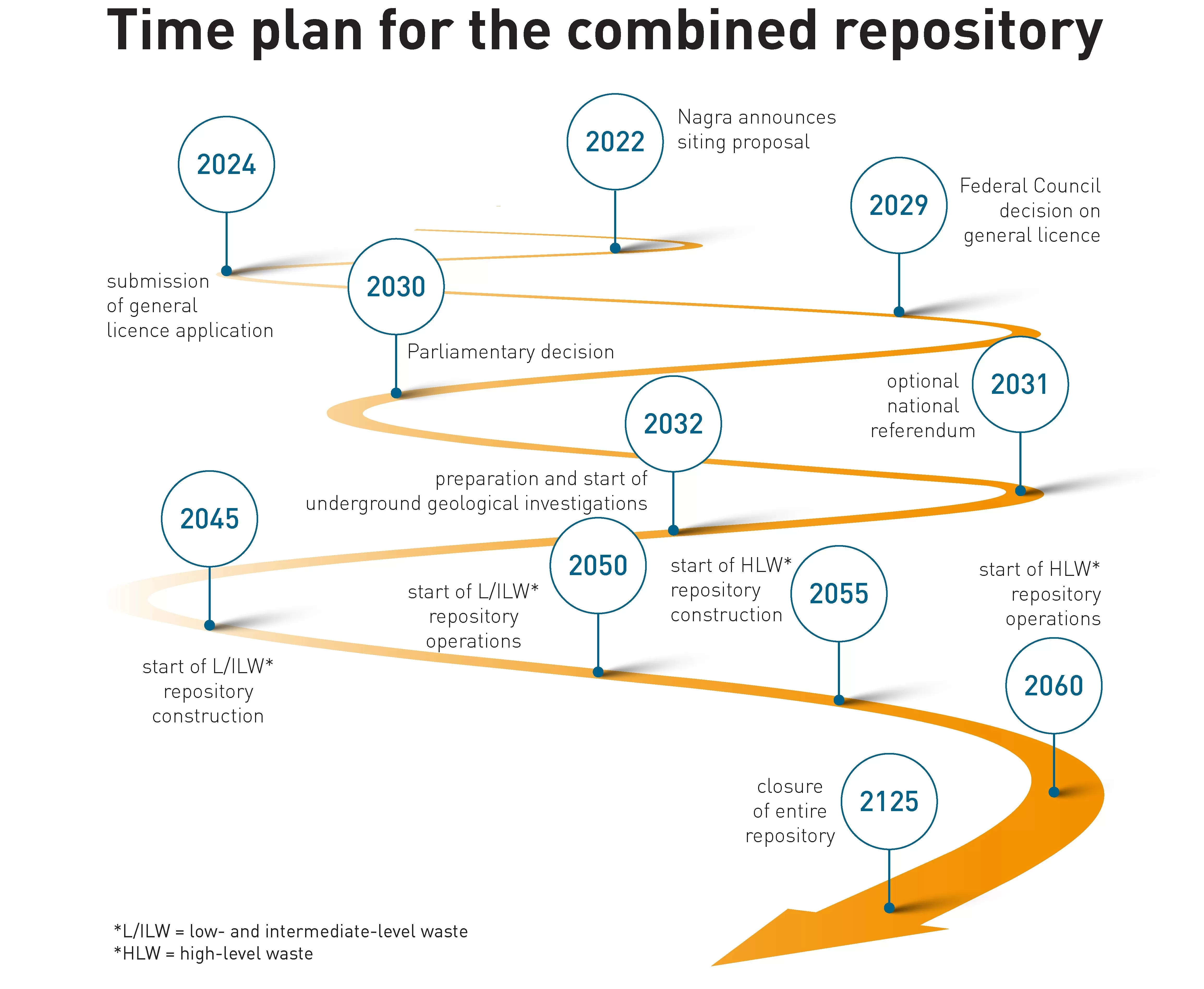What is the procedure for identifying the most suitable repository site?
In order to protect humans and the environment, Switzerland will dispose of its radioactive waste in a deep geological repository. The search for the most suitable repository site is being carried out in line with the “Sectoral Plan for Deep Geological Repositories”. The Federal Government has the lead in this broadly-based procedure. The decisive factor in determining the safety of a repository site is the stability of the underground conditions rather than of those at the surface. Geology and operational safety, rather than political factors, are the only important consideration in determining the most suitable site. Socio-economic and spatial-planning aspects also play a role, but they are secondary to safety.
Affected parties can participate in the site selection process. The responsible Swiss Federal Office of Energy (SFOE) provides more information on regional participation.
A three-stage plan to identify the best site
At each stage, Nagra has been able to increase its understanding of the underground in the investigated regions, clarify uncertainties and concretise the repository project. Nagra is developing the basis for the siting decision of the Federal Council.
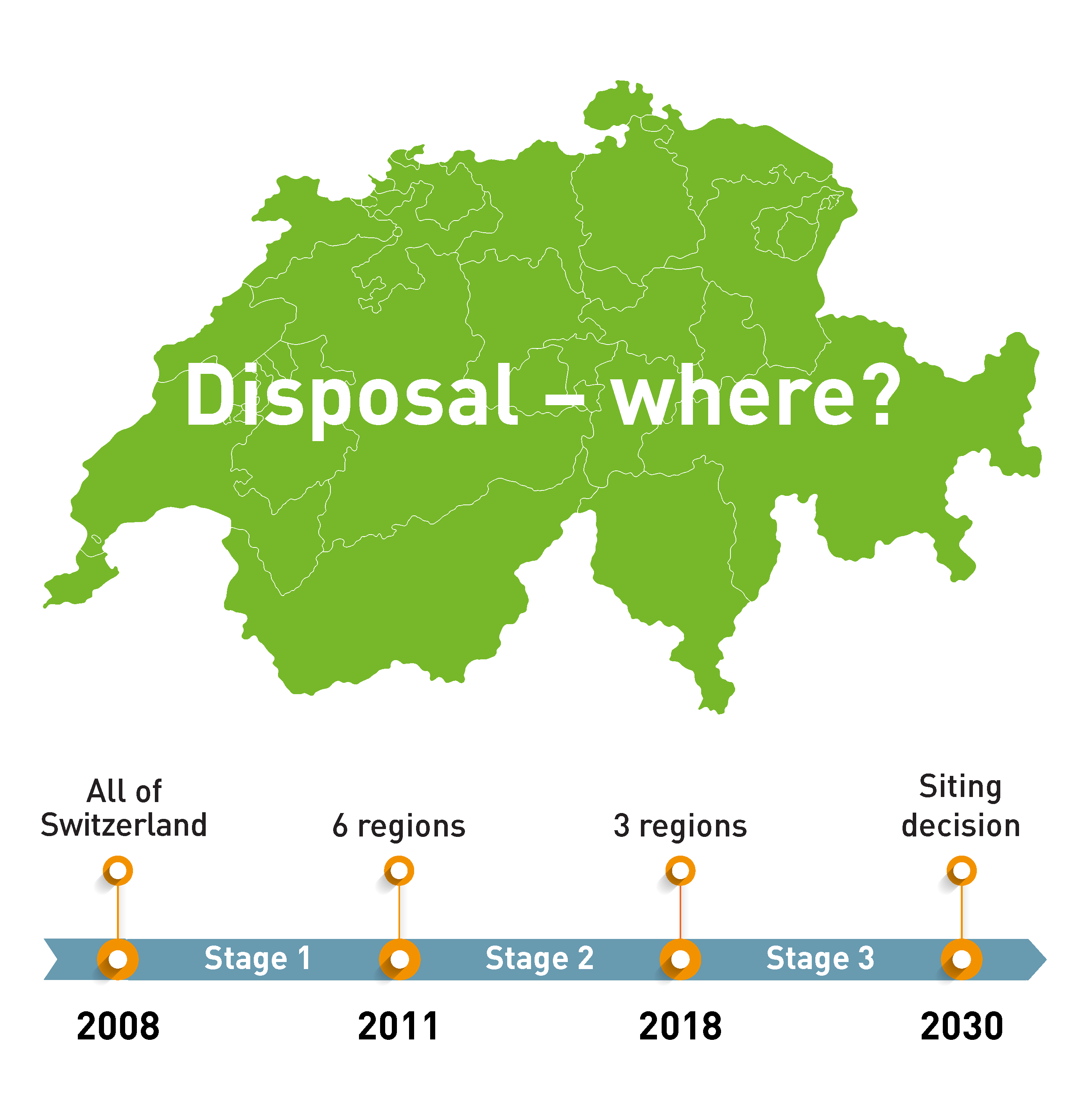
Starting point for Stage 1: “blank map” of Switzerland
In Stage 1, the aim was to determine geological siting regions that are, based on safety-relevant and geological criteria, potentially suited for deep geological repositories. The starting point was a “blank map” of Switzerland, meaning that all of Switzerland’s potentially suitable regions and rock formations were considered. As a result, Nagra identified six potential siting regions, and the Federal Council decided that these should be investigated in more detail.
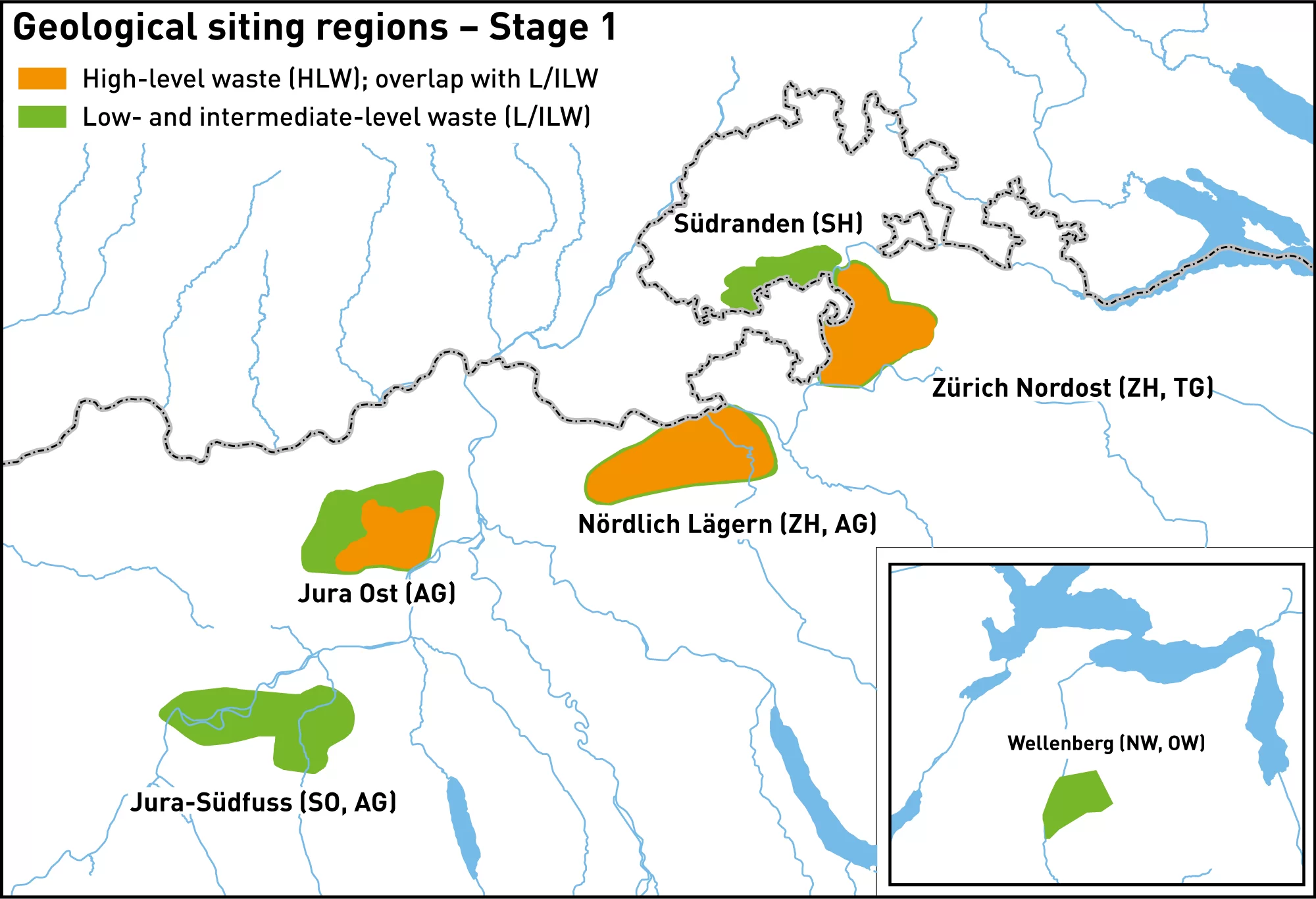
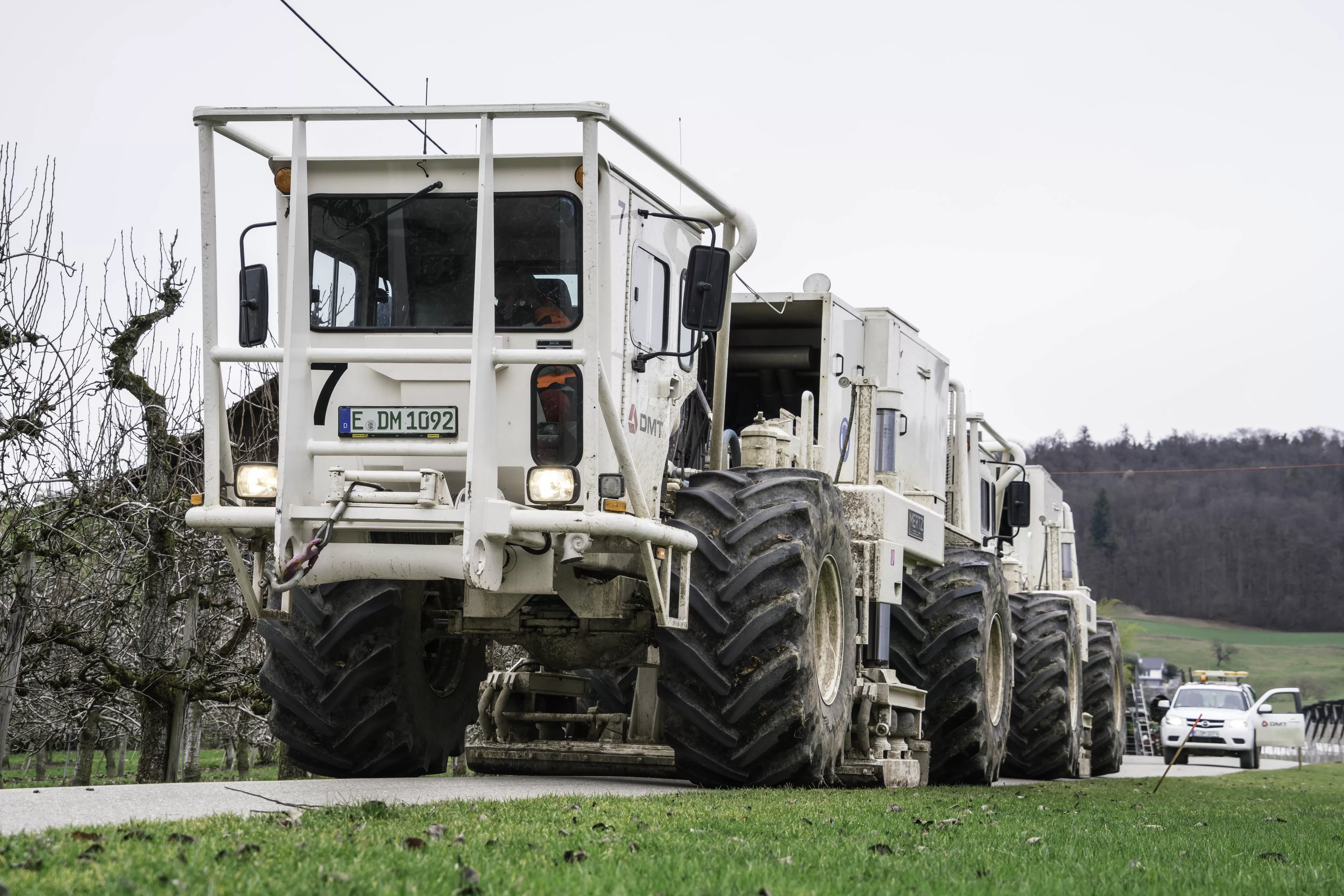
Seismic measurements in Stage 2
In Stage 2, and in collaboration with the regions concerned, Nagra identified at least one siting area for the surface infrastructure in each of the six siting regions. To investigate the underground of the potential siting regions, one of the investigation methods used involved seismic measurements. In line with the federal authority stipulations, Nagra then conducted a safety-based comparison of all regions. At the end of Stage 2, the Federal Council determined the remaining siting regions to be Jura Ost (Canton Aargau), Nördlich Lägern (Cantons Aargau and Zürich) and Zürich Nordost (Cantons Thurgau and Zürich) along with the corresponding siting areas for the surface facility.
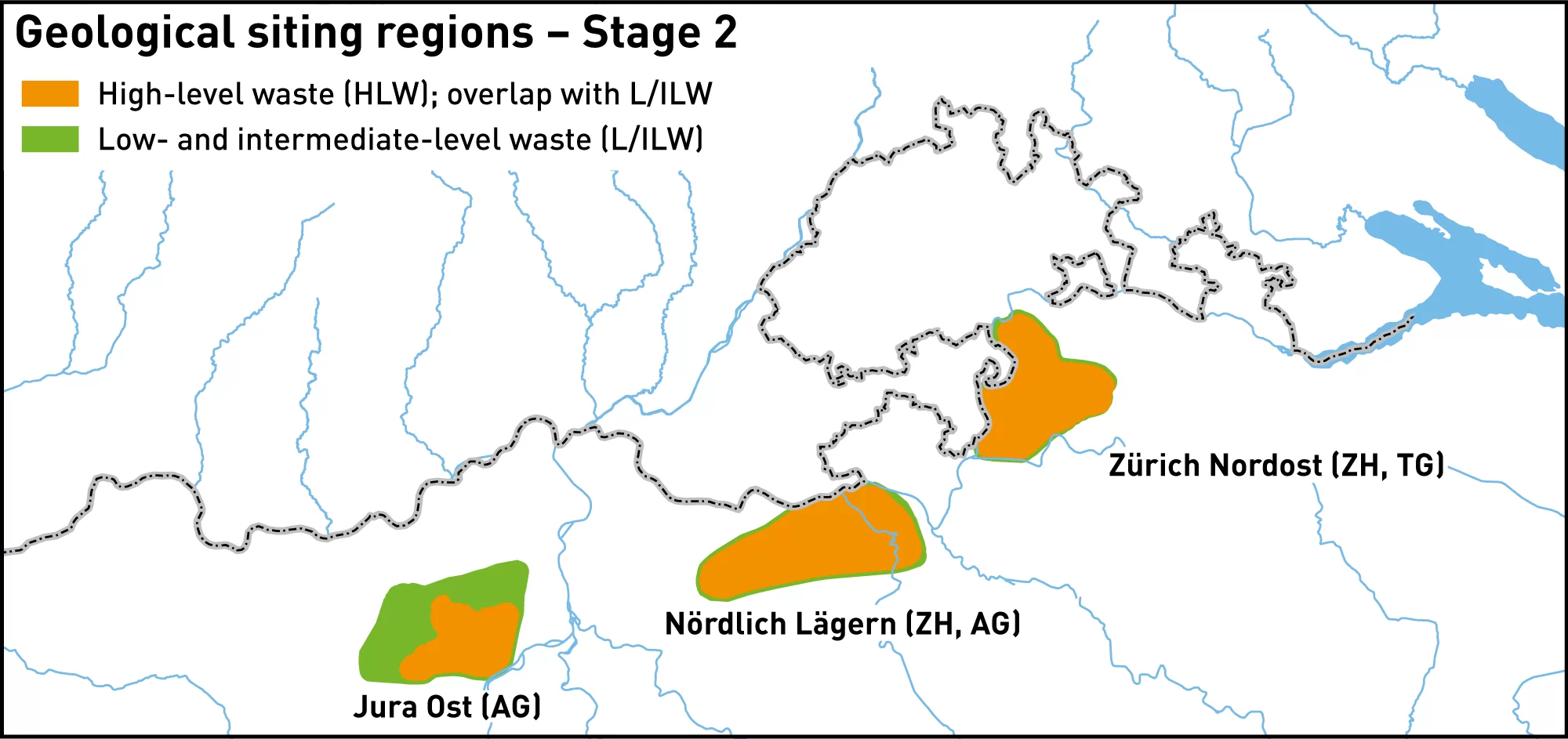
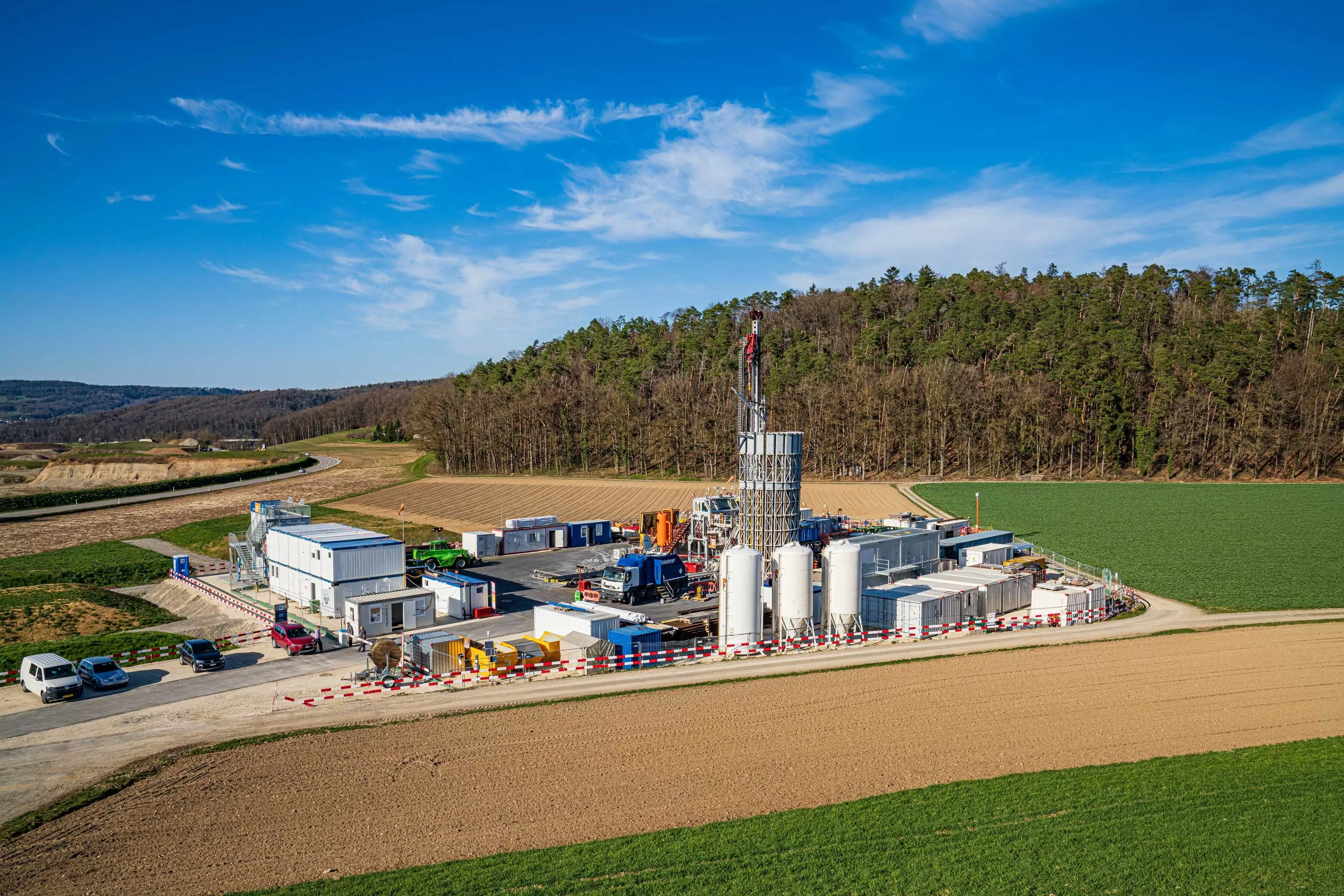
In-depth investigations in Stage 3, including deep boreholes
Nagra is investigating the three remaining siting regions in depth. The investigation programme includes the previously conducted seismic measurements as well as Quaternary boreholes and deep boreholes. The deep borehole investigations complete the already existing overall picture of the underground geological environment in the siting regions. Based on the results of these investigations and the safety-based comparison of the siting regions, Nagra will announce in 2022 which siting region it considers best suited for a deep geological repository. For this site, it will then prepare a general licence application that it will submit around 2024. These steps are in line with the stipulations of the federal authorities.
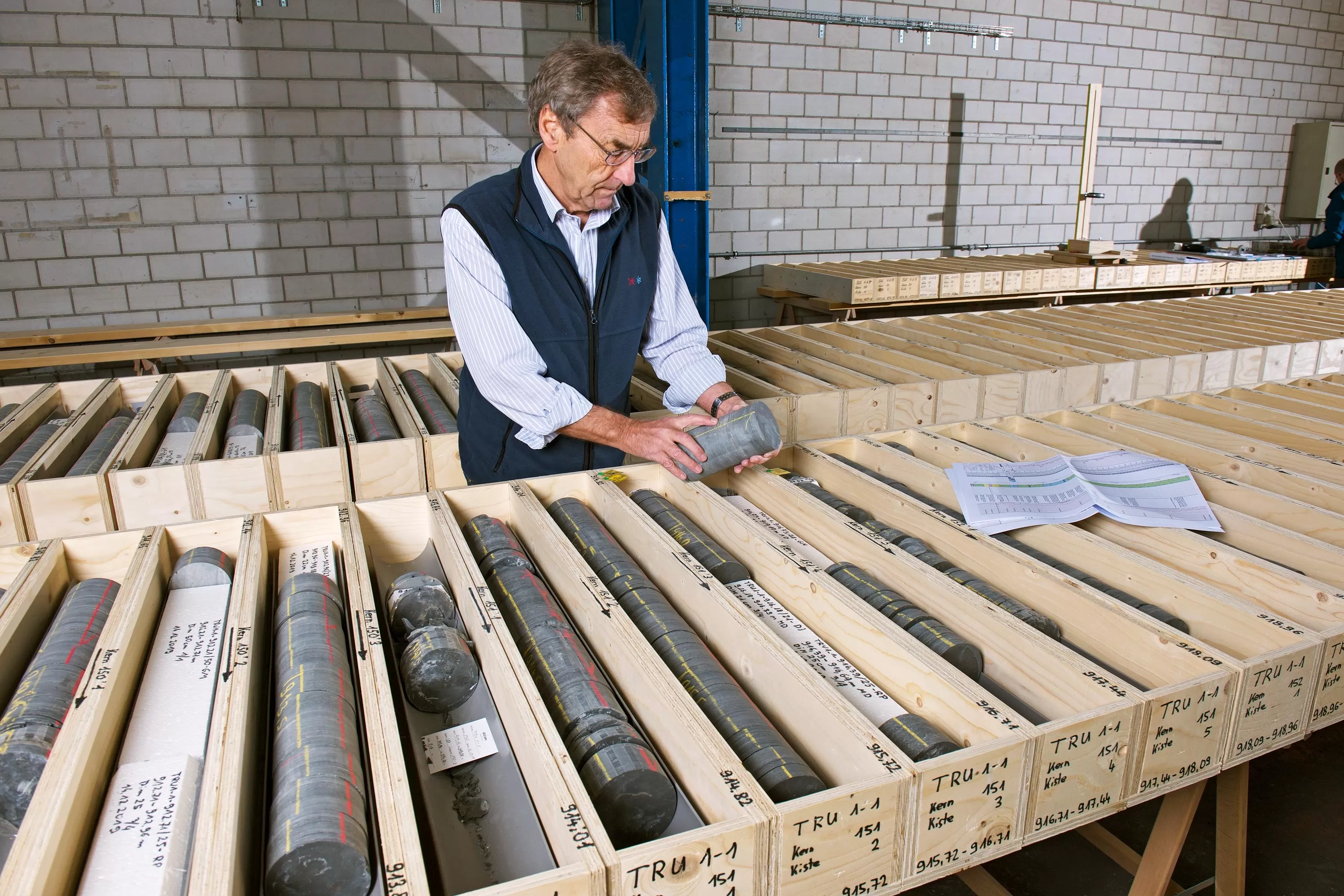
Who does what, and what are the next steps?
Radioactive waste disposal is a task concerning the whole of Switzerland, and numerous stakeholders are involved in the process.
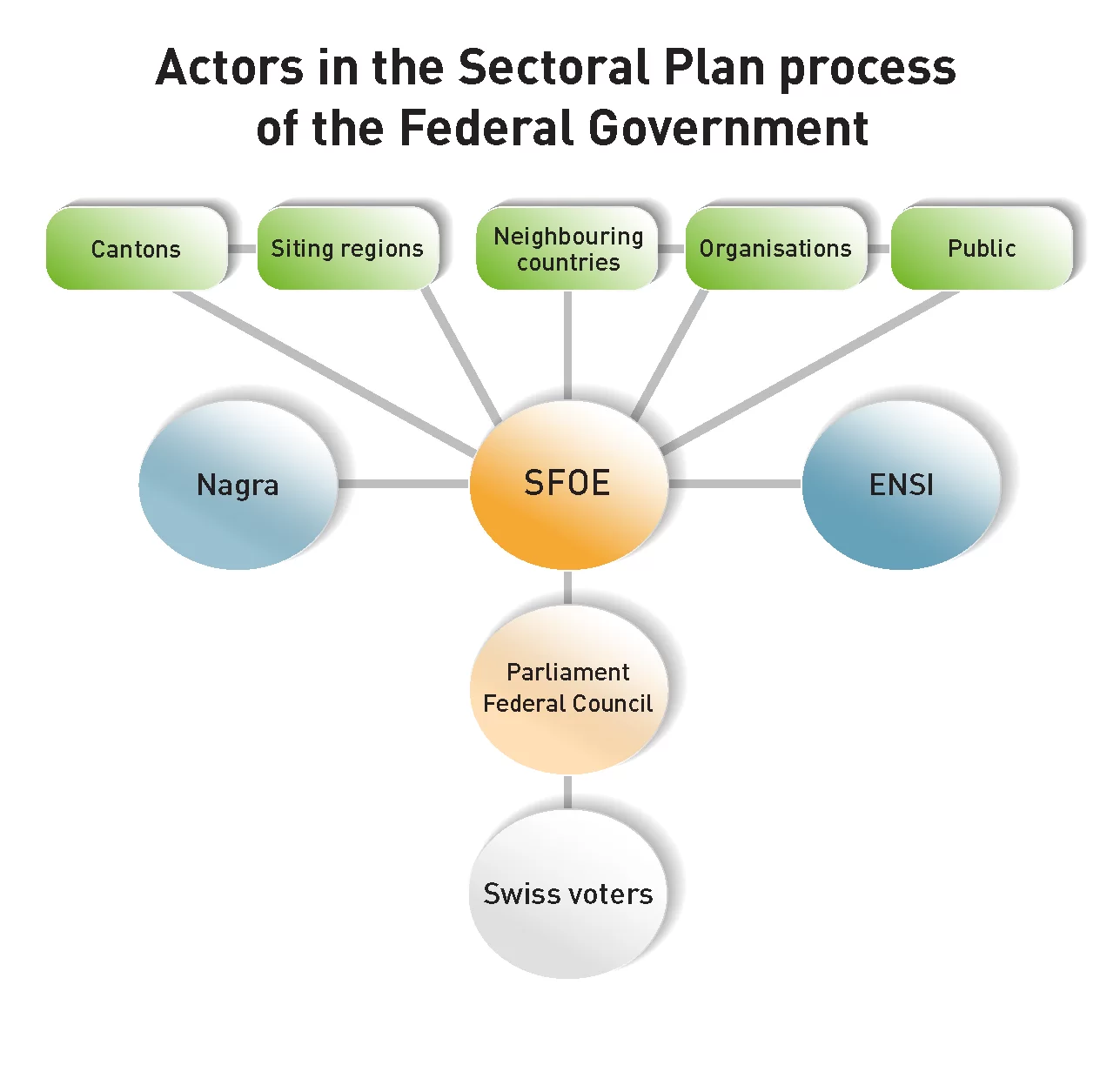
- Nagra’s mandate is to plan and construct a deep geological repository. Numerous investigations have been conducted to create a solid scientific foundation. On this basis, it is in a position to propose the most suitable site and subsequently submit a general licence application around 2024. It constantly considers the state of the art to concretise its repository project.
- The Swiss Federal Nuclear Safety Inspectorate (ENSI) supports the procedure in its role as regulatory authority and makes stipulations that Nagra has to comply with. It is also responsible for the safety-based evaluation and assessment of the siting proposals. ENSI will review Nagra’s general licence application in detail.
- The Swiss Federal Office of Energy (SFOE) has the lead in the Sectoral Plan process, organises the regional participation and informs the public about the progress of the work. It will also appeal to the cantons and responsible federal departments to take position on Nagra’s application.
- Communities, cantons, the public and interested organisations in the potential siting regions as well as in neighbouring Germany accompany the site selection process and raise their concerns within the framework of regional participation. At public hearings, they can take position on Nagra’s siting proposals and the general licence application. Regional conferences form the core of regional participation and can also take position on the general licence application.
- The Federal Council decides on licenses for the construction of nuclear installations, which include geological repositories. A decision on Nagra’s general licence application is expected around 2029 and will be submitted to the Federal Assembly for approval.
The parliamentary decision on the general licence for a repository is subject to an optional national referendum, meaning that a national referendum can be called against granting this licence. In this case, the Swiss voters will have the final say (around 2031). Emplacement of low- and intermediate-level waste in a repository can start around 2050, and emplacement in a high-level waste repository can start around 2060.
